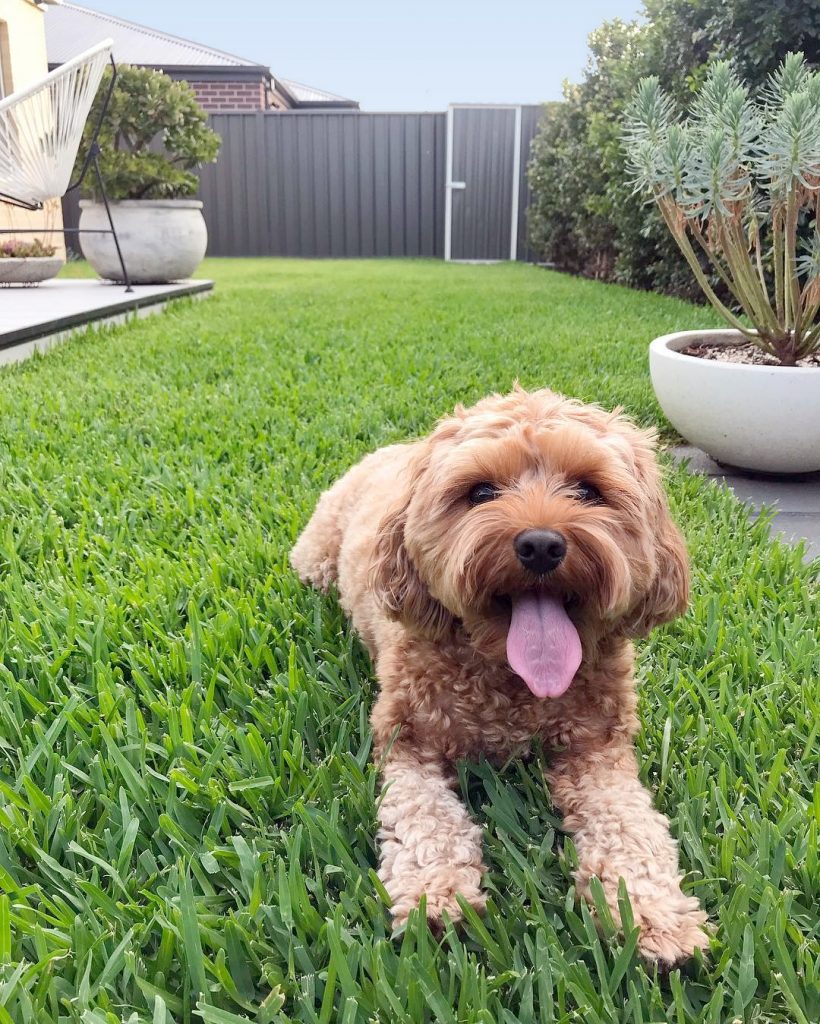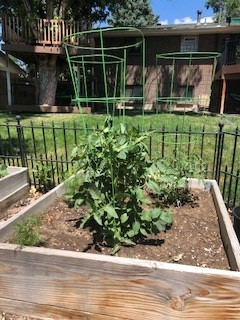The Dog-Friendly Yard and Gardens
- 2021-05-01
- By mkirk
- Posted in The Garden Buzz
By Mae Rauen, Colorado Master Gardener Emeritus
For many families, life isn’t complete without the family dog. Depending on the size and habits of these pets, an attractive landscape can be difficult to maintain. With a little knowledge and a willingness to address issues it is possible to have a well-behaved pooch and a beautiful yard. By following three simple steps, the home landscape can be saved and/or refreshed to accommodate almost any dog. Training is the first and most important step. It may be necessary to include exclusion as a second step. A third step may be to install dog friendly plants in place of lawn areas.
Dogs are wonderful companions because they love to make their humans happy. Even older pets can be lovingly encouraged to avoid areas of the yard for elimination. Teaching a pet to use a chosen area, especially for the first of the morning heavily concentrated urination, will help to eliminate “dog spots” in the lawn. Contact a dog-training professional for help.
Raised beds for vegetable and flower gardens are a proven way of gardening and may be off-putting enough to thwart dog invasion. Row covers and hoop houses in vegetable gardens also deter canine activity. There are many relatively inexpensive and easy to install fencing choices to exclude pets from flower and vegetable gardens. Attractive border or edging barriers work well with small dogs. Mid-sized and larger dogs can be contained with 27-inch to 54-inch metal panels. Climbers and jumpers may need the taller panels. Decorative gates and arches are also available and expand design options. A popular design technique is to develop focal points or “rooms” within a landscape.
The use of a mulch or ground cover planting may provide an option for an elimination area. Inorganic mulch is available in a variety of rock and gravel products. Organic mulches include chipped or shredded wood and bark of various sizes. Many of the plant choices known as “Stepables” are good options for an alternative to lawn. These plants are creeping perennials and ground covers that tolerate foot traffic, do not need mowing, and once established, require less water than typical lawn varieties.
Horticulture Resources
- Garden Buzz Archives
- CSU Extension Resources
- Colorado Master Gardener Program
- Foothills to Plains Native Plant Master Program
- Native Bee Watch Community Science Program
- The Co-Hort Blog
- PlantTalk Colorado
- Soil Testing
- Plant Select
- Emerald Ash Borer
- Japanese Beetle
- Colorado State Forest Service
- Ask an Expert





